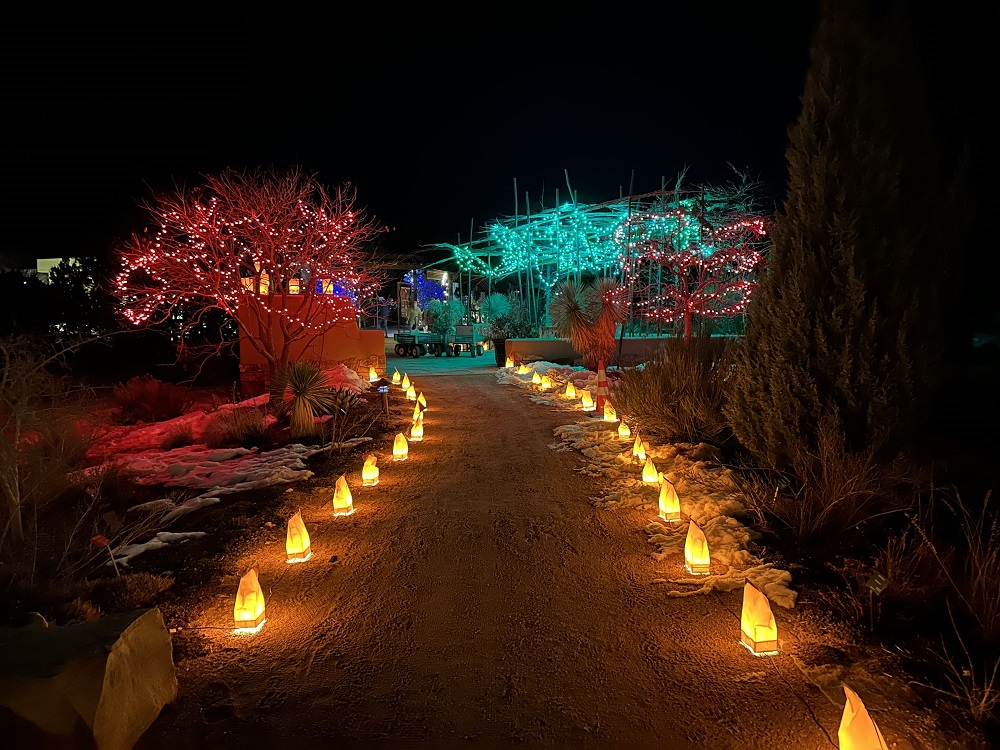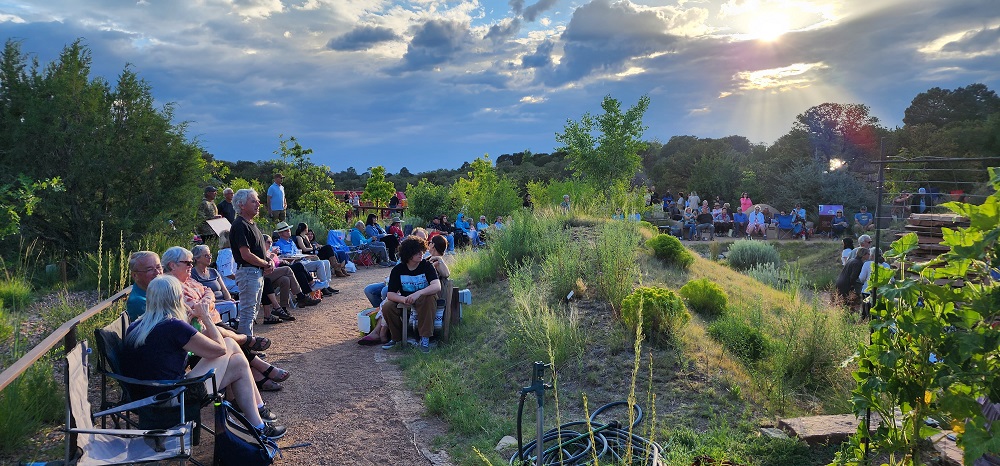 2024 marks a significant milestone in our efforts to enhance the Garden’s pathways, which have endured extensive wear from pedestrian traffic, weather, and seasonal maintenance. After a decade of use by more than 200,000 visitors, existing SFBG pathways need renovation for continued safe and accessible passage by people of all abilities. We originally installed paths of stabilized crusher fines, a material both aesthetically suited to our naturalistic gardens and more ecologically sound than pavement, with less heat reflection and erosive run-off than traditional paving. However, this surface is itself subject to degradation over time and it’s time for renewal. We are also developing a new Children’s Discovery Garden. Site preparation and pathways will be our first priority, so we can invite visitors to walk through the future garden space and envision the changes to come.
2024 marks a significant milestone in our efforts to enhance the Garden’s pathways, which have endured extensive wear from pedestrian traffic, weather, and seasonal maintenance. After a decade of use by more than 200,000 visitors, existing SFBG pathways need renovation for continued safe and accessible passage by people of all abilities. We originally installed paths of stabilized crusher fines, a material both aesthetically suited to our naturalistic gardens and more ecologically sound than pavement, with less heat reflection and erosive run-off than traditional paving. However, this surface is itself subject to degradation over time and it’s time for renewal. We are also developing a new Children’s Discovery Garden. Site preparation and pathways will be our first priority, so we can invite visitors to walk through the future garden space and envision the changes to come.
The Need for Pathway Improvements
Over the years, our garden paths have suffered from erosion, leading to uneven surfaces and drainage issues. While our team has tirelessly worked to clear snow and ice, smooth out surfaces, and ensure passability, the increasing maintenance demands now require more extensive intervention. Our primary goal is to restore the existing pathways, including the Art Trail, and to create new, inviting paths in the Children’s Discovery Garden.
Vision for the Children’s Discovery Garden (CDG)
We envision the CDG as a haven for family-oriented nature play, outdoor enrichment, and education. Currently an undeveloped woodland with yuccas and cacti, the CDG requires careful clearing and surfacing to create safe, engaging areas for children. Accelerating the pathway work in the CDG will allow visitors to explore and appreciate the space as it evolves into a fully realized garden.
Enhancing Accessibility for All Visitors
With the anticipated increase in visitors following the CDG’s opening, it’s crucial to improve access to all garden areas. We aim to ensure that guests of all abilities can enjoy the garden’s beauty, health benefits, and educational opportunities without concerns about footing or accessibility.

Photo: Brian Koehl
Choosing Sustainable Materials
After evaluating various surface options, we determined that crusher fines are the best choice. These natural materials offer environmental benefits such as reduced runoff and a smaller carbon footprint compared to asphalt, concrete, or pavers. Additionally, crusher fines create a more forgiving surface for children.

Construction Techniques for Pathway Improvements
- Improve existing pathways:
- Install channel drains or drop inlets to reduce erosion and water pooling.
- Scarify and moisten paths before adding new stabilized crusher fines up to 1 ½” depth and compacting.
Art Trail Modifications:
- Remove the single rock step and regrade the trail to eliminate steps.
- Build rock retention walls to stabilize the path sides.
- Resurface the trail with stabilized crusher fines.
Children’s Discovery Garden Pathways:
- Lay out and stake paths, removing hazardous plant material like cacti and yucca.
- Install metal or rock edging to define paths and contain the crusher fines.
- Create a gravel base layer for drainage, followed by a top layer of stabilized crusher fines, compacted for a smooth finish.
Recognition and Support
We are thrilled to announce that this project has been awarded $99,000 through a 2024 Outdoor Recreation Trails+ Grant from the Outdoor Recreation Division (ORD) of the Economic Development Department (EDD) of the State of New Mexico. This grant program supports projects that enhance communities’ outdoor recreation opportunities. By funding shovel-ready projects, the grant helps foster economic development, prosperity, and wellness through improved access to trails, river parks, wildlife viewing areas, and more. We also are grateful to have received $80,000 in capital outlay funds from the New Mexico State Legislature to apply to pathway renovations. Between these two generous funding sources as well as private funding we anticipate wonderful, renewed walkways throughout the Garden.
Timeline
The project will begin in July 2024 with preparations for Phase One, which will focus on renovating existing paths and removing the step on the Art Trail. This involves requesting updated bids, selecting a contractor, finalizing the contract, and scheduling the work. Phase One installation may begin late 2024 and continue through 2025. During this time, final construction documents for Phase Two, the Children’s Discovery Garden (CDG) paths, will be prepared. In mid 2025, Phase Two will commence, including layout and staking of pathways, grading, plant material removal, pathway edging installation, and compacting the gravel base and crusher fines surface. This phase is planned to start after peak visitation, likely in November. Project will complete by June 2026, addressing potential delays or material availability issues. The project will be co-led by Executive Director David Young and Director of Operations Lydia Abenethy, with input from Director of Horticulture Linda Churchill for Phase Two.

Moving Forward
As we move forward with these essential improvements, we are excited about the positive impact they will have on our garden community. Enhanced pathways will not only improve accessibility but also enrich the overall visitor experience, making our garden a welcoming and inclusive space for all.
We look forward to sharing these beautiful, revitalized paths with you and inviting everyone to explore the transformed spaces, especially the Children’s Discovery Garden. Stay tuned for more updates as we progress with this vital project!



